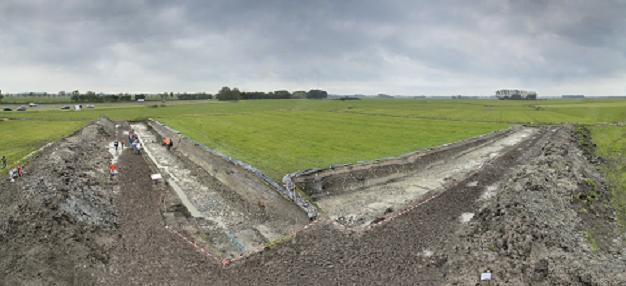Settlement development of Frisian Terp sites from the Early Iron Age to the Late Middle Ages
Theun Varwijk, M.A.
E-mail: t.w.varwijk rug.nl
Promotor: Prof. Dr. G.J. de Langen, Prof. Dr. D.C.M. Raemaekers
Co-promotor: Dr. J.A.W. Nicolay
Period of employment: 2013-2017
Financed by: Province of Fryslân, Municipality of Súdwest-Fryslân, Municipality of Littenseradiel, University of Groningen/Groningen Institute of Archaeology (RUG/GIA), Vereniging voor Terpenonderzoek.
Project description
Starting in the Early Iron Age, the newly formed salt marshes in the North of the Netherlands were colonized. From time to time these salt marshes were still flooded, therefore the early Frisians built their farms on top of an artificial mound or a terp. As the population grew, terps were enlarged or a cluster of smaller house terps merged into a larger village terp. Until the dikes were erected during the Late Middle Ages it was necessary to dwell on such a terp. Therefore terps are an archaeological treasury vault for the history and society of the Southern North Sea area for the described period.
During the 19th and the early 20th century many terps have (partially) been dug-away, as the terpsoill (which consists of manure and household waste) was used a ‘fertilizer’. This also led to a growing interest in the (material) culture of terps. In the course of a century of scientific terp research many terps were studied, but most of this research is still, at best, only partially published. The purpose of this research is to gain more insight in the (spatial) structure of terps and terp settlements. It will do so by examining the old (un)published data and by conducting new fieldwork. The fieldwork will consist of three excavations of dug-away terps. Here the features dug into the so-called terpsole and there archaeological value will be examined.
The analysis of past research and the distribution of features and material culture from the new excavations should lead to a better understanding of terp settlements and society. How and for what reason did the settlements in the (Frisian) terp region develop (in a spatial way) and what is the relation to the environment, society and economy are therefore important questions.

| Last modified: | 23 July 2018 1.29 p.m. |
